by Dot Cannon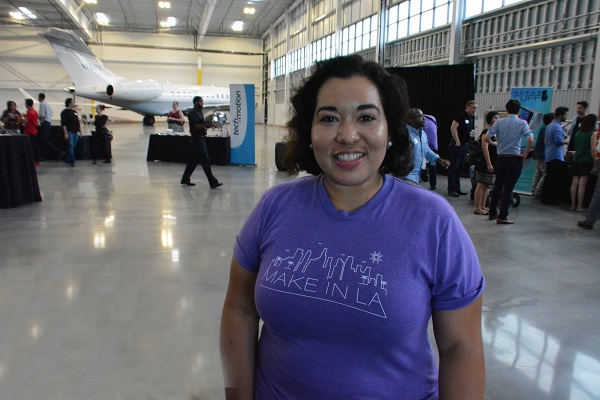
How could Make in L.A. possibly improve on their first “Hardware Demo Day”?
Oh, wait. They just did.
On Tuesday, June 28th, Make in L.A. hosted their second “Hardware Demo Day”, in Van Nuys Airport’s Clay Lacey Hangar.
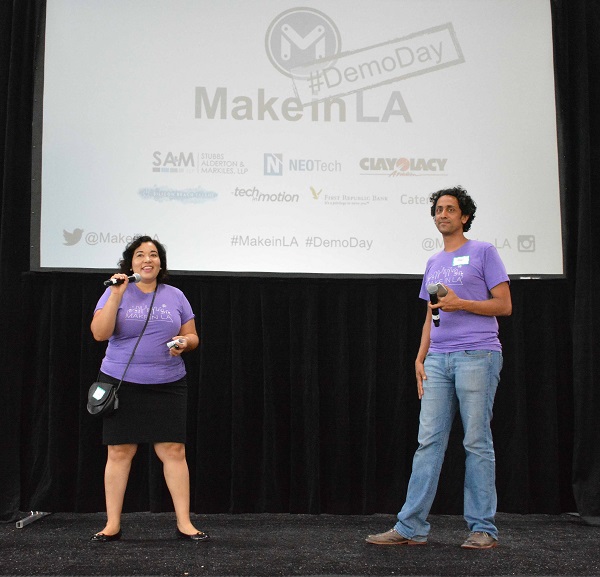
At 1:00, the theme from “Top Gun” blasted from the speakers.
“We thought we’d start with (that), given we’re in an airplane hangar,” explained Make in L.A. Co-founder Noramay Cadena in her opening remarks.
Make in L.A. is Los Angeles’ first hardware accelerator, which opened in August of 2015. Three times yearly, they issue a call for early-stage startups with breathtaking new ideas. Competition is intense (as you might imagine) for their free four-month mentoring program. An initial investment, product development, manufacturing assistance, and presentation coaching are all part of the ensuing curriculum.
“Hardware Demo Day” is the culmination. at which the makers present their new products to potential investors and the press.
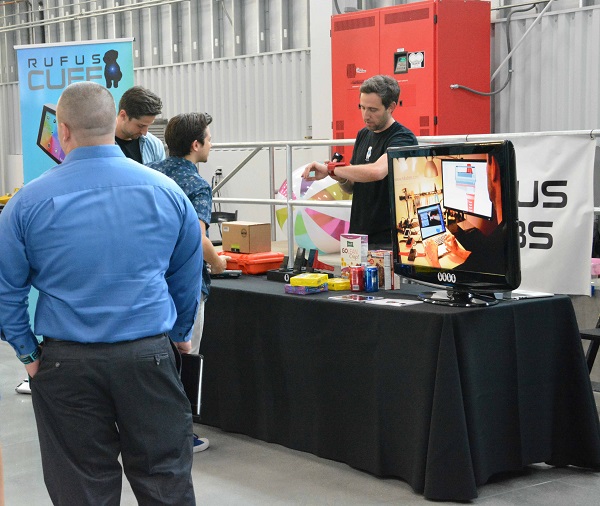
Tuesday’s “Hardware Demo Day” had begun with lunch and networking. The graduating startup teams had their products on display.
Noramay and co-founder Shaun Arora said four teams would showcase their creations that day. Team members came from Los Angeles, New York and San Francisco. Each team was allotted twenty minutes to deliver a short pitch, followed by a question-and-answer session.
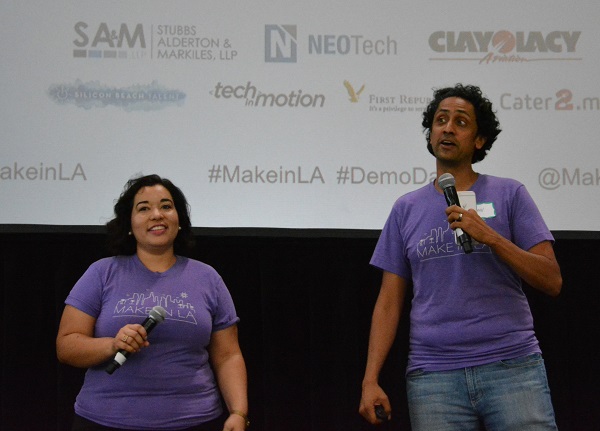
“Our startups have worked ten times harder than I’ve seen any startup (work before),” Shaun commented.
That effort showed, in a polished program that highlighted the makers’ passion for their ideas.
Before the presentations, though, an award was forthcoming.

Lynda Levitan, from City Councilwoman Nury Martinez’s office, presented Noramay, Shaun and Make in LA partner Carmen Palafox (right) with a certificate of recognition from the Councilwoman’s office. She also mentioned Los Angeles’ new Make It In L.A. initiative, which Mayor Garcetti recently introduced.
While Make in L.A. predated the initiative by almost a year, they may very well be at the core of it in the future.
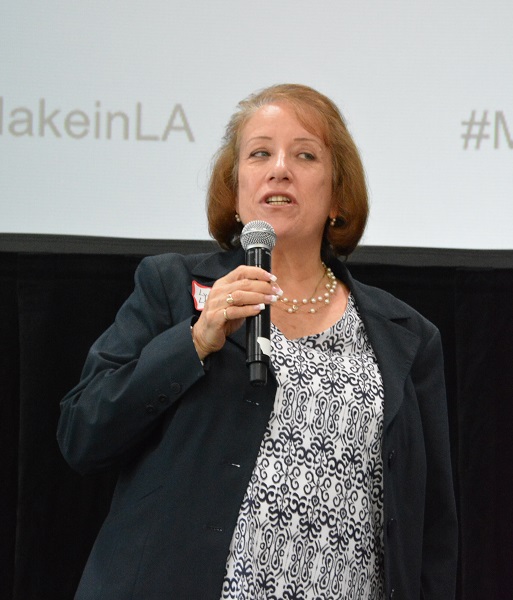
“Our office is going to try very hard to connect with them,” Ms. Levitan commented. “We’re going to try to bring them in.”
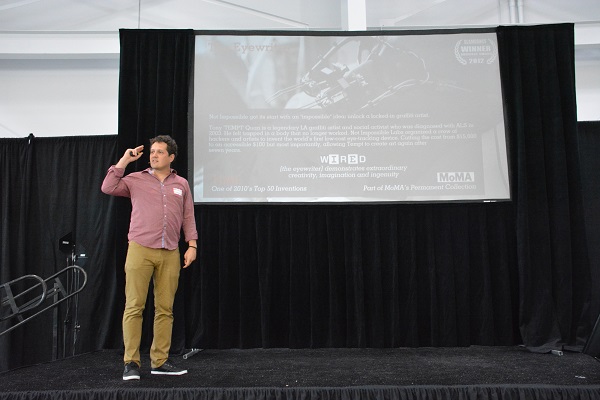
A high point of the program, before the four team presentations, was a “lightning talk” by Not Impossible Labs CTO Daniel Belquer. His organization’s all about solving “impossible” problems with technology and storytelling.
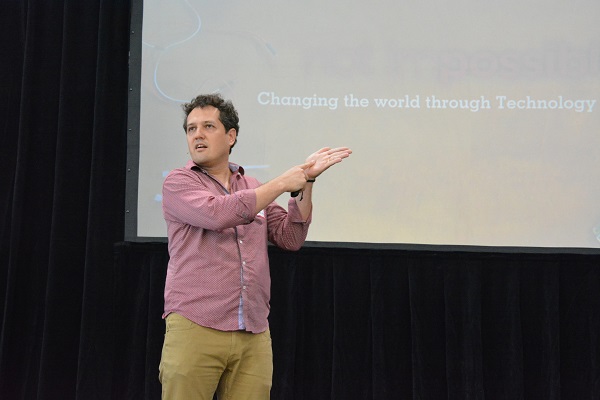
Daniel shared the story of innovating for a graffiti artist paralyzed by Parkinson’s disease. “We grabbed a group of hackers and makers,” he said. “(They) grabbed a camera to track motion of the pupil.” The resultant technology. “The Eyewriter“, enabled the artist to draw again–by blinking! But now, his disease is progressing–and Daniel’s team is reaching further.
“He cannot blink any more, so easily,” Daniel said. “So we are creating a system to grab his brain waves, so he can draw.”
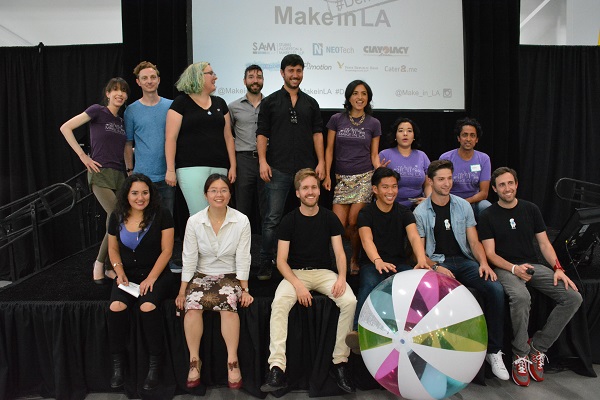
But the real stars of the afternoon were the four startup teams–and their creations.
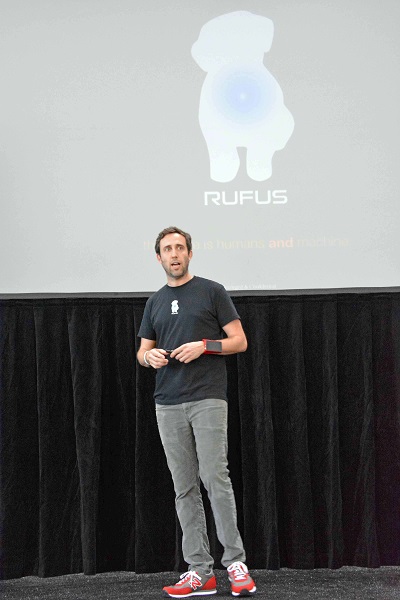
“The leading cause of injury on a warehouse floor is high-speed vehicles,” said Rufus Labs CEO Gabe Grifoni, as he presented the “Rufus Cuff”. This is a wearable tablet, billed as “the ultimate workforce wearable.” In addition to the usual tablet functions, the Rufus Cuff alerts workers to dangers around them.
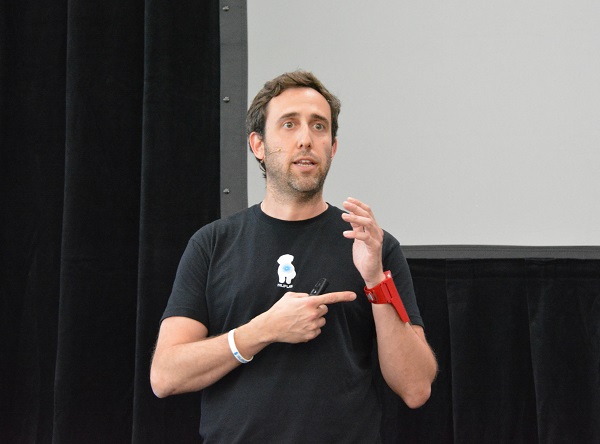
“Think of it as a logistics platform,” Gabe said. The Rufus Cuff, which has a 3.2-inch wide screen, gives the wearer a haptic feedback and audible alarm if a vehicle is approaching. It’s also designed to show a worker where to find products, and map out “intelligent” routes around the floor.
Gabe told the audience the Rufus Cuff garnered half a million dollars in preorders on its Indiegogo campaign. Currently, their focus is on warehouse safety, but first responders have been in touch, as well.
“We’re super excited to be shipping this summer, starting in August,” Gabe said as the audience applauded.
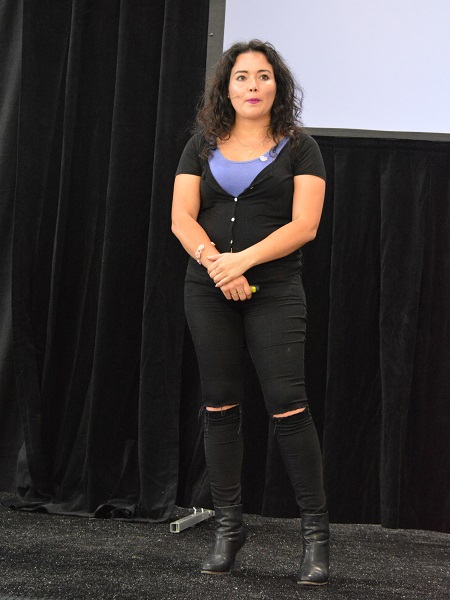
“I’m Karol Munoz, and I am obsessed with sharing memories,” said the CEO of Luma Legacy, as she began her presentation. Karol said she came up with her innovation, a “smart” charm bracelet, after interviewing six hundred women in New York.
“We asked, ‘what would you save in a fire?’ Over and over, the answer was “photos and jewelry,” she said.
Karol, who has a background in graphic design, said her inspiration came from vintage lockets, which held photographs. But Luma Legacy’s twenty-first century version of “photo jewelry” goes far beyond that concept.
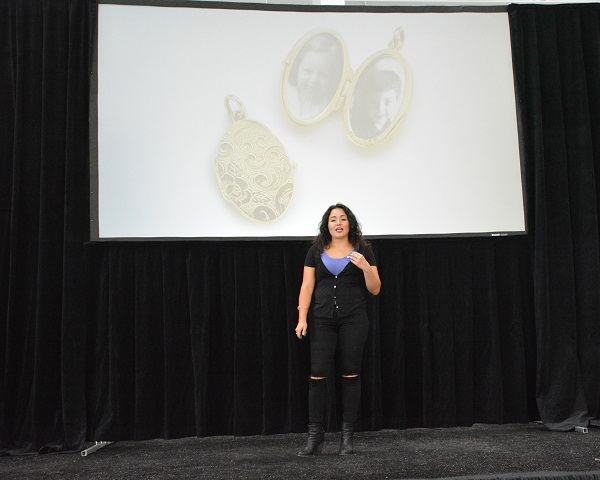
Each bracelet charm, Karol says, has a unique QR code in the back, that allows wearers to scan in photos and video.
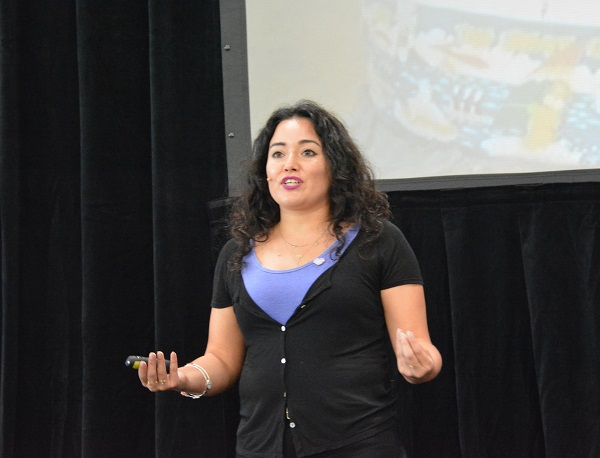
“We will have a strong collection of about six hundred charms,” she said. “Luma Legacy is the future of storytelling. We will see young girls breaking up with their boyfriends because they didn’t get one for their birthday.”
(In fact, young girls may not be the only ones interested. During the Q and A session following Karol’s presentation, one guest asked if Luma Legacy had plans to design anything of this type for men! She responded that cuff links and tie bars are among their designs for the future.)
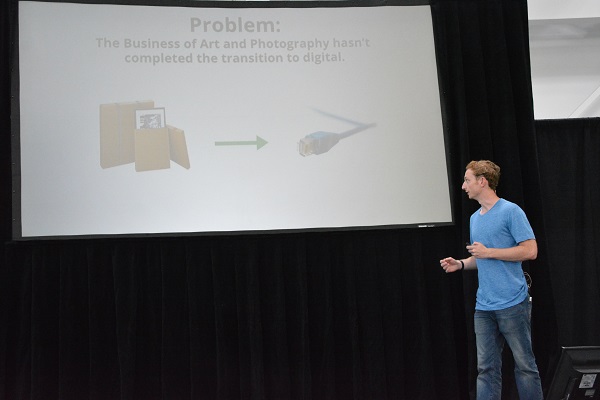
A different kind of photographic innovation followed, as Canviz CEO Matt Waters took the stage.
“An artist went from pigment to pixels, but the market for art has not made this transition yet,” he said. “We like to think of (Canviz) as being like the iPod, but for visual media.”
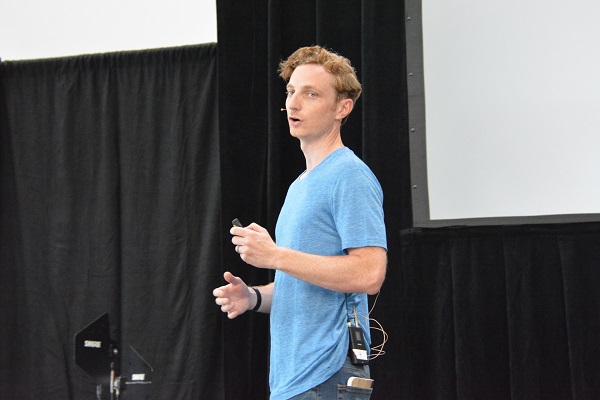
The product Matt and his team have developed goes far beyond being a digital photo frame. Referencing J.K. Rowling’s “Harry Potter” classics, Matt told the audience how photographs in Canviz seem to come to life, through gapless looping of GIFs and HD movies. In addition, Canviz is a platform for curating and sharing art, photography, animated GIFs, and movies.
“Long-term, we’re a software company,” Matt explained. “We’re a community of artists and users, (and) we plan on growing our marketplace of content.
Matt said Canviz splits revenue with artists for content curated. He also seemed to take an artist’s budget into account, when discussing pricing.
“The pricing is $349 to beta customers,” he said. “We subsidize to artists, $200–or give (it) to amazing artists.”
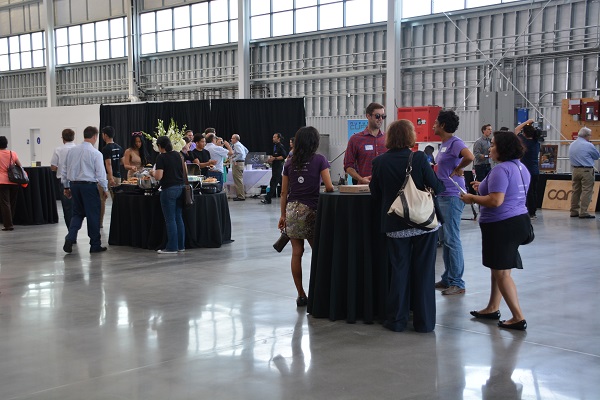
Hardware Demo Day 2 had all the excitement and festivity of its predecessor–but with a professional smoothness. Lunch, networking, live demos, four maker pitches, a panel AND a lightning talk all happened in under four hours. Information was conveyed concisely and clearly; Make in L.A. has found its groove, and can relax and have some fun with it.
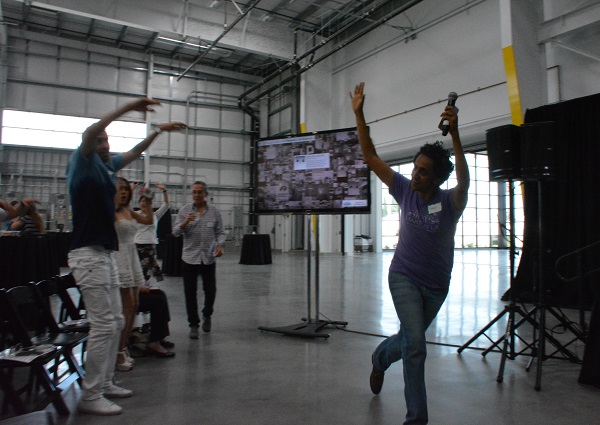
Sheer exuberance showed itself as Shaun led attendees in an enthusiastic “seventh-inning-stretch” wave. There were also plenty of whoops and cheers following several of the pitches.
And nowhere was that creative joy more evident than when Emerge wrapped things up in the day’s final pitch presentation.
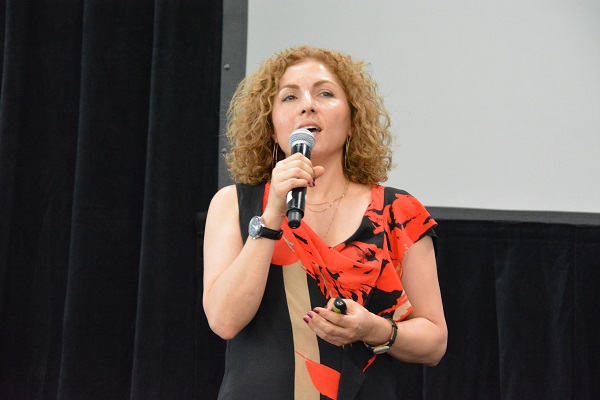
“They kept the best for last. Who else can get an astronaut for their opening act?” asked first female private space explorer Anousha Ansari.
Ms. Ansari is on the Board of Advisors for Emerge. She introduced the Emerge team of Sly Lee, Isaac Castro and Mauricio Teran by saying, “Some years ago, I had this idea for keeping astronauts in touch with their families…”
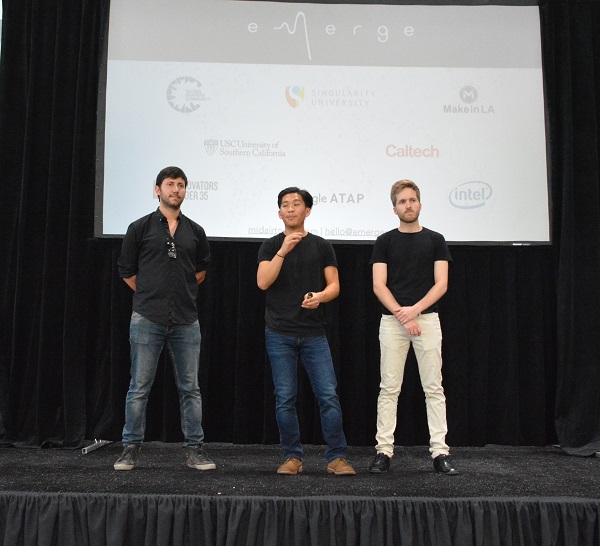
That idea would lead to a demo which everyone wanted to try, following the presentation. Emerge’s pioneering virtual-reality system incorporates touch!
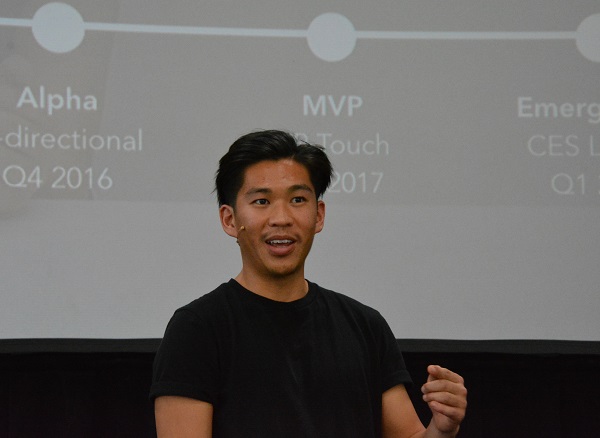
“Sound is a pressure wave. We can actually create a pressure iterance that can be felt in mid-air,” Sly said. “Imagine being able to physically play with your kid when they’re on the other side of the world.”
At present, Sly explained, Emerge can create an interaction of 120 degrees. “Our device will be bidirectional, sensing where your hand is, (creating feedback) and being able to create 3D complex shapes.”
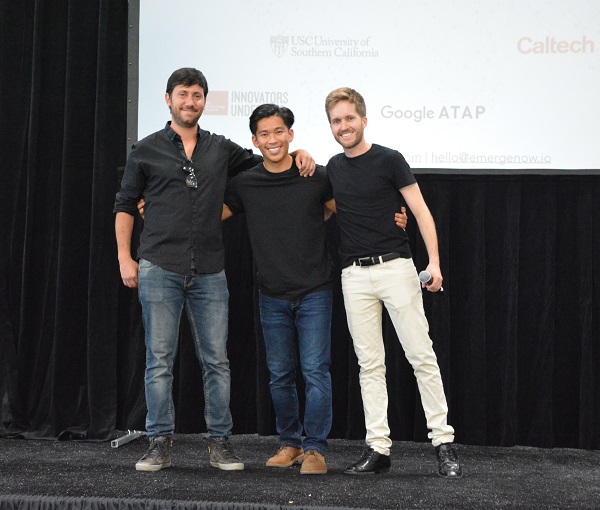
Currently, Emerge plans to start selling business-to-business. But when the time is right, they plan to sell their systems to consumers, as well.
The audience gave Sly, Isaac and Mauricio rousing applause.
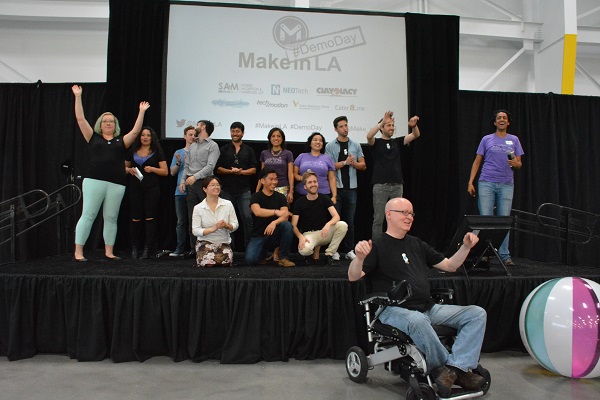
The teams, gathered for one final “wave”–complete with beach ball–received a similar reception.
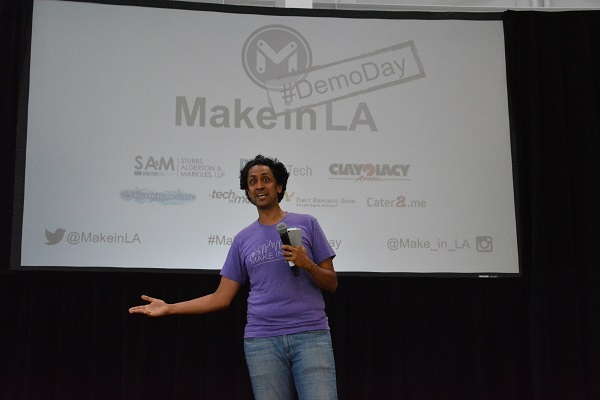
“We had 160 people show up today,” Shaun said during the closing remarks. “We push these teams really hard, and they still come back.”
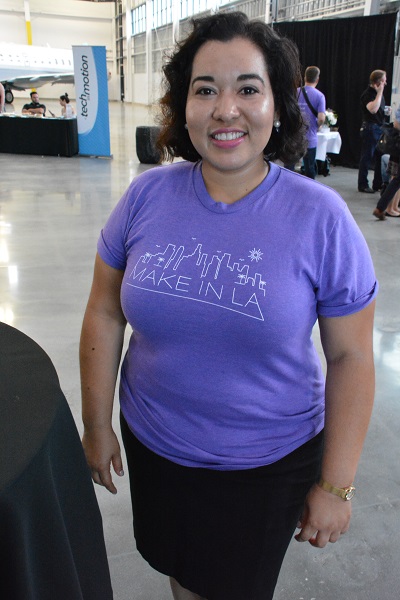
“This went really well,” Noramay commented during the networking and live demos that followed. “We’re proud of (everybody).”
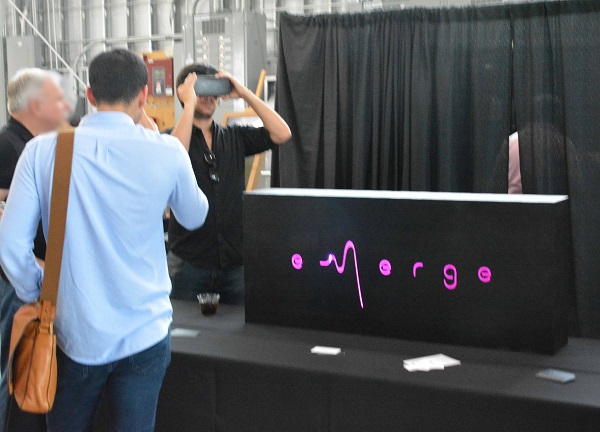
Before leaving, most attendees–including this reporter–couldn’t resist getting a demo of Emerge’s touch-plus-VR technology. “I wanted to see it at CES, but the line was too long,” remarked one man.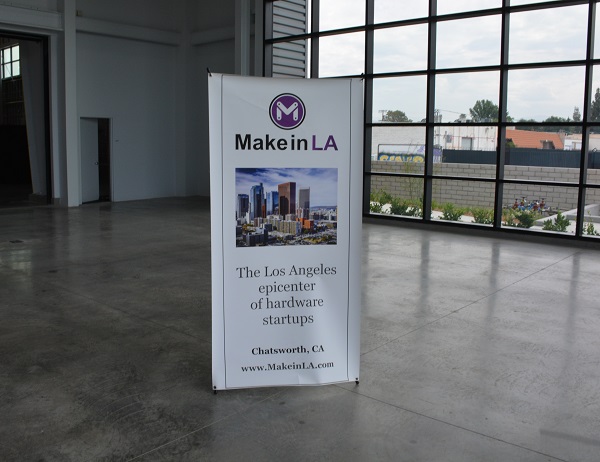
So, what’s the Emerge experience like? We don’t want to do any “spoilers” here. We’ll tell you we experienced a two-part demo. The first was a lot of fun, putting us in a 360-degree situation that (unless you’re scared of clowns) will leave a smile on your face.
The second part may very well give you “butterflies”–in a good way.
